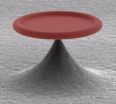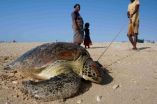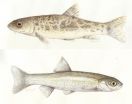(Press-News.org) ANN ARBOR, Mich.---Strategies for preventing the spread of whooping cough---on the rise in the United States and several other countries in recent years---should take into account how often people in different age groups interact, research at the University of Michigan suggests.
The findings appear in the Nov. 12 issue of the journal Science.
Thanks to widespread childhood vaccination, whooping cough (pertussis) once seemed to be under control. But the illness, which in infants causes violent, gasping coughing spells, has made a comeback in some developed countries since the 1980s, becoming a major public health concern. In addition, there's been a shift in who's getting sick, with fewer cases seen in preschool children and more in teenagers, but the reasons for the changing patterns have been unclear.
A variety of explanations have been proposed---genetic changes in the bacterium that causes the disease or the "wearing off" of immunity in people who were vaccinated years ago, for example.
But by combining two independent sets of data from previous studies, epidemiologists Pejman Rohani, Xue Zhong and Aaron King found that age-specific contact patterns alone can explain the observed shifts in prevalence and age-specific incidence.
One set of data came from an unplanned "natural experiment." In Sweden, where infants had been routinely vaccinated for nearly 30 years, concerns about vaccine safety and efficacy led to a halt in pertussis vaccination in 1979. Immunization resumed in 1996 using a different vaccine. During the hiatus and after vaccination resumed, the Swedish Institute for Infectious Disease Control collected data on whooping cough incidence by age group.
The second data set was from a 2008 study in which more than 7,000 people from eight European countries kept track of all the contacts they had with other people during one day, recording the age and sex of the person they interacted with, where the interaction took place and the duration and type of contact (such as conversation or physical contact). A key finding of that study was that children interacted far more frequently with other children than with adults.
The U-M researchers developed a simple mathematical model of whooping cough transmission that incorporated the contact data and then compared the model's predictions with the actual incidence data. The model accurately predicted the declines in whooping cough cases seen in Swedish infants, toddlers and adults and the upturn in cases among teenagers with the resumption of vaccination.
The results cast doubt on the prevalent notion that infected adults, in whom the illness often goes undiagnosed, act as a reservoir for the disease and are a major source of transmission to younger folk. In many countries, concerns about this possibility have prompted adult booster vaccination programs.
But the U-M study shows that, overall, "the role of adults in transmission is minimal," and that blanket booster-vaccination of adults is unlikely to be an efficient strategy for controlling the disease, said King, an assistant professor of ecology and evolutionary biology with a joint appointment in mathematics.
The researchers stressed that because the study used incidence data from Sweden, one can only speculate on how its results apply to the United States, where infant vaccination compliance rates are lower and the population is much more diverse. "We need similar analyses for the United States," said Rohani, a professor of ecology and evolutionary biology with a joint appointment in the Center for the Study of Complex Systems.
The study makes two robust conclusions, said King. "The first point is that we see strong evidence for the efficacy of vaccination directed at children when compliance is high. The second is that better knowledge of actual contact patterns among age groups is crucial for the design of more effective and economical vaccination strategies."
INFORMATION:
The researchers received funding from the Department of Homeland Security, the Fogarty International Center (National Institutes of Health) and the Bill & Melinda Gates Foundation.
More information:
Aaron King: www.lsa.umich.edu/eeb/people/kingaa/index.html
Pejman Rohani: www.lsa.umich.edu/eeb/people/rohani/index.html
Xue Zhong: www.lsa.umich.edu/eeb/people/postdocs/zhongxue.html
Science: www.sciencemag.org/
Boston, Mass. - While it has become clear in recent years that susceptibility to pain has a strong inherited component, very little is known about actual "pain genes" and how they work. In the November 12th issue of Cell, researchers at Children's Hospital Boston and their collaborators report on a novel human pain gene. People with minor variations in this gene showed clear differences in susceptibility to acute heat pain and chronic back pain. Corroborating mouse studies give some clues as to how the gene controls pain sensitivity. The gene was uncovered in a genome-wide ...
Controlling and modulating the flow of light is essential in today's telecommunications-based society. Professor Tobias Kippenberg and his team in EPFL's Laboratory of Photonics and Quantum Measurements have discovered a novel way to couple light and vibrations. Using this discovery, they built a device in which a beam of light traveling through an optical microresonator could be controlled by a second, stronger light beam. The device thus acts like an optical transistor, in which one light beam influences the intensity of another.
Their optical microresonator has two ...
Individuals who suffer from severe acne are at an increased risk of attempting suicide, according to a paper published on bmj.com today.
The study also finds that an additional risk may be present during and up to one year after treatment with isotretinoin, a commonly prescribed drug for severe acne. However, the authors stress that this additional risk is most likely due to the acne itself, rather than the drug treatment.
Isotretinoin (commonly marketed as Roaccutane, Accutane, Amnesteem, Claravis, Clarus or Decutan) has been used to treat severe acne since the 1980s. ...
New research has revealed up to 16,000 endangered turtles are being caught each year by villagers in just one region of Madagascar, despite a government ban.
Researchers from the University of Exeter and Blue Ventures Conservation say the figure, thought to be a conservative estimate, is the first direct assessment of turtle exploitation on the island.
The study highlights the extent of small-scale fishing, traditionally very difficult to monitor, and could be vital in finding a way to sustainably manage turtle fishing in the region.
Dr Annette Broderick, from the ...
"The biggest surprise to me was that we could rescue the autistic phenotype [in the human cells] to something close to normal," said Alysson Muotri of the University of California San Diego.
The researchers made the discovery by first transforming adult cells taken from patients with Rett Syndrome into induced pluripotent stem cells (iPS cells) using an established cocktail. iPS cells look and act very much like embryonic stem cells.
Those stem cells were able to form functional neurons in cell culture. However, neurons derived from Rett Syndrome patients exhibited ...
They show that one of those genes in particular has a long evolutionary history, as evidenced by the fact that it plays a role in pain sensing in flies, mice and humans. At least in mice, the newly described gene is also linked to a condition known in humans as synesthesia, in which one sensory experience triggers the perception of another sense.
"We found lots of new genes and pathways that have never been implicated in pain before," said Josef Penninger of the Institute of Molecular Biotechnology of the Austrian Academy of Sciences.
"From a helicopter view, this ...
Night-time violence among young Spaniards is becoming ever more common, according to a research study carried out by the European Institute of Studies on Prevention. The study shows that 5.2% of young people carry weapons when they go out at night, 11.6% have been attacked or threatened, and 23% have got into a fight at some time.
"Reports about young people being attacked or injured in fights when they go out at night are becoming increasingly common", Amador Calafat, lead author of the study and a researcher at the European Institute of Studies on Prevention (IREFREA), ...
An international team led by the Forest Technology Centre of Catalonia has carried out the first large-scale study of the threats facing freshwater fish in the Mediterranean basin. Invasive species, along with over-exploitation of water resources, are the most important pressures, and those that expose fish to the greatest risk of extinction.
"The continental fish of the Mediterranean basin are one of the most threatened biological groups in the world", Miguel Clavero, lead author of the study and a researcher from the Landscape Ecology Group of the Forest Technology ...
After four years of conducting intensive calculations in the supercomputer MareNostrum at the Barcelona Supercomputing Center, scientists headed by Modesto Orozco at the Institute for Research in Biomedicine (IRB Barcelona) have presented the world's largest data base on protein motions. Called MoDEL, this new database holds more than 1,700 proteins and is partially accessible through Internet to researchers worldwide. MoDEL has been developed to study the basic biology of proteins and to accelerate and facilitate the design of new pharmaceutical agents.
"Nowadays we ...
Now that the 2010 election is over, here is something to consider for the 2012 race: If you want to fatten your company's profits, contribute to a political campaign.
A study by two College of Business Administration professors at the University of Tennessee, Knoxville, found that when firms engage in corporate political activities, such as lobbying and making campaign contributions, they enjoy about 20 percent higher performance. The study, by Russell Crook and David Woehr, along with Sean Lux of the University of South Florida, entitled "Mixing Business with Politics: ...



